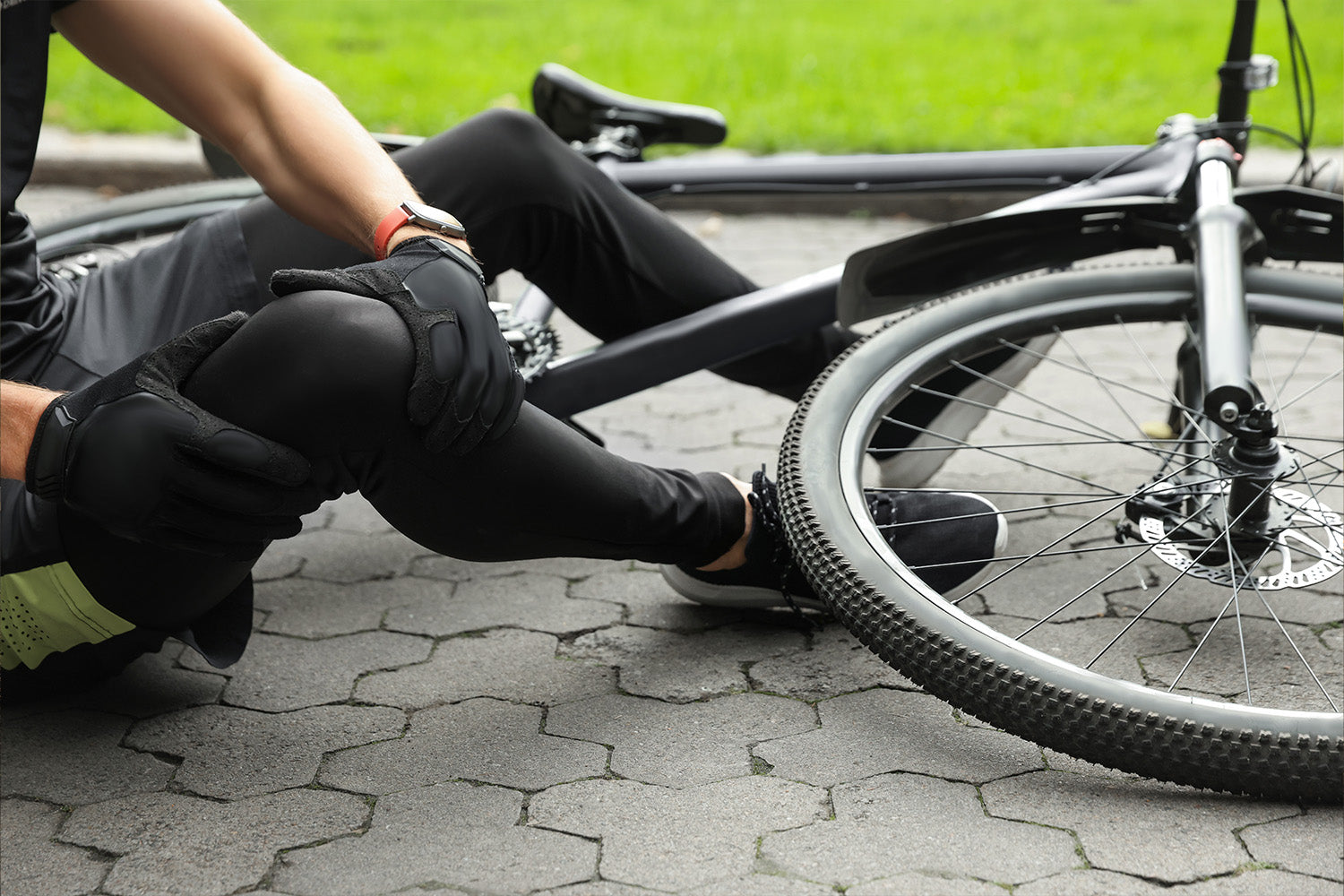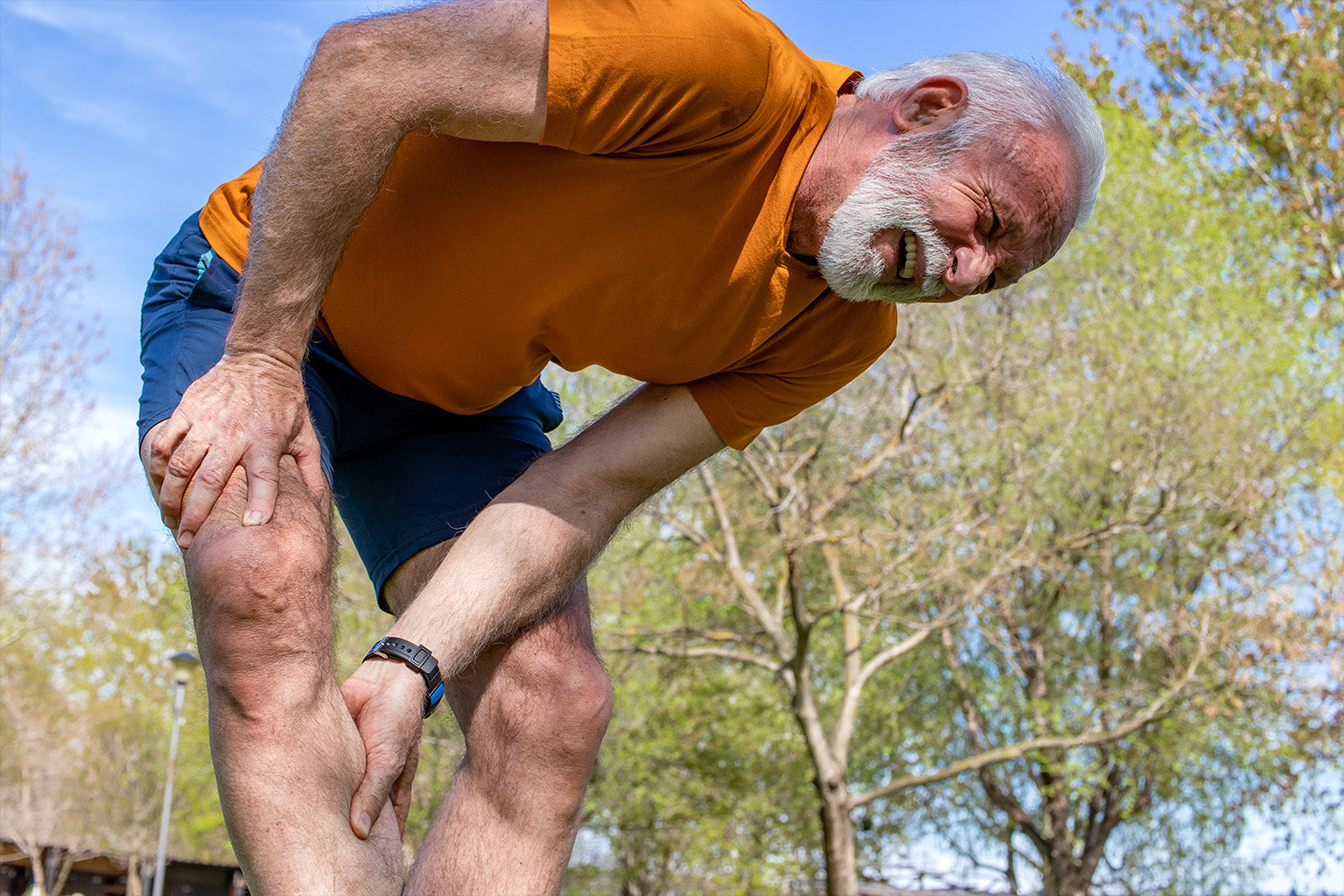Medically Reviewed By | Dr. Kate Panawash, PT, NCS, DPT
The “calf” sits between the knee and the ankle on the backside of each leg. It is made up of two muscles, the gastrocnemius and the soleus, which come together at the Achilles tendon in the heel. Many movements and activities engage this area, which makes it prone to problems.
Many people experience some form of pain in their calf muscles in their lifetimes. The pain differs from person to person and can be due to several factors. It comes in varying levels of severity, ranging from very mild to quite an unpleasant experience — one that may even affect your ability to stand, walk, or run.
Whether you’re an elite athlete, live an active lifestyle, or have an occupation that requires physical labor, this guide will break down calf pain for all activity levels — what causes it, who is at risk, and what you can do about it.
What Does Calf Pain Feel Like?
Sometimes, pain in the calf is a dull, aching pain in the back of the leg. Other times, the pain can feel sharp and more intense. Calf pain can also manifest as a “tightness.”
Some symptoms in the calf may point to more severe conditions. If you are experiencing any of the sensations listed below, contact a healthcare provider as soon as possible.
- Swelling
- Tingling or numbness in the lower leg
- “Cool” sensation or paleness in color
- Sudden muscle weakness
- Fluid retention
- Dull ache or muscle pain
- Tenderness, redness, and warmth in the area
What Can Cause Calf Pain?
Below are the most common possible causes of pain in the calf area:
Muscle Cramping
When leg muscles suddenly start contracting or “cramping,” it can cause pain that lasts for a few seconds up to a few minutes. Cramps usually arise when you overuse or misuse a muscle during physical activity, but they can also be due to dehydration, mineral deficiencies, and injury.
For roughly a third of those over 60, calf cramping can happen during sleep — this is usually related to other conditions or the taking of certain medications.
Muscle Strains
Calf muscle strains can occur from heavy or improper muscle use. Doing exercises you’re not used to or increasing the intensity of exercises in a short time can leave you prone to strains. Specific activities that often lead to calf strains are running, biking, and powerlifting.
It’s common to feel exactly when a strain occurs — pain and soreness come on quickly, followed by limited mobility in the area. Severe strains can lead to the tearing of the muscle, which will probably require medical attention.
You may also be experiencing a sprain, which occurs when the ligaments around a joint are stretched too far, like rolling your ankle when running on uneven terrain. A sprain may be the culprit if your leg pain is clustered toward your knee or ankle.
Achilles Tendinitis
The Achilles tendon is attached to the bottom of the muscles in the calf area. When excess stress or straining causes this tendon to become inflamed, it can lead to stiffness and pain in the back of the leg, including the calf.
Doctor of Physical Therapy (DPT) and Board Certified Neurologic Clinical Specialist (NCS) Katelyn Panawash warns that some people may be more prone to developing this condition based on their anatomy or due to other health conditions, such as hypertension or diabetes mellitus.
Sciatica
The sciatic nerve travels from the lower back down through each leg. When there are issues with this nerve, it can cause muscle weakness in the legs, as well as pain, tingling, and even numbness or a cramping sensation in the calf area. Dr. Panawash emphasizes the importance of seeing a physical therapist to help determine the best course of treatment for you, as there are a few different potential causes.
Bruising
When tissues are subject to blunt force trauma, like a fall or being hit with an object, it can cause bruising. The discoloration and tenderness associated with contusions come from broken capillaries under the skin.
Bruises are very common, but you should consult with a physician if bruising occurs unexplained with no apparent cause.
Medical Conditions
While there are plenty of common causes of calf pain, there are also a few serious conditions that can cause lower leg pain.
These include:
- Deep vein thrombosis (DVT) is when a blood clot forms in your blood vessels. Having DVT can increase your chances of a pulmonary embolism or a transient ischemic attack (TIA), also known as a mini stroke. Healthcare providers may use the Well's criteria to help determine the likelihood of DVT.
- Compartment syndrome occurs when internal bleeding or swelling causes muscles to build dangerously high levels of pressure, which can result in occlusion of blood flow to the limb.
- Peripheral neuropathy is nerve damage that causes sharp pain, numbness, and tingling usually in the hands and feet, which can result in lasting impaired sensation.
- Peripheral artery disease (PAD) is when blood flow to the arms or legs is restricted. One of the symptoms is claudication, which is an increase in leg pain during activity that goes away quickly with rest.
You should always contact your primary care doctor if you have lower leg cramps or pain. Your doctor will be able to diagnose the reason for your pain, identify any possible health conditions or risk factors, and provide you with detailed professional guidance on what to do next.
Treating Calf Pain
Here are the most common methods used to treat painful conditions involving the calves:
Rest
Resting, combined with ice and elevation, is a great first aid action for calf pain as it protects the muscle from damage. For two to three days after the onset of calf pain, rest your leg(s), so the tissues can repair themselves and intermittently expose the calf to cold with an ice pack to reduce swelling. Elevation of the leg can also help with swelling.
Medications
To help with calf pain, you can use over-the-counter pain relievers to temporarily provide comfort. NSAIDs (non-steroidal anti-inflammatory drugs) like ibuprofen, acetaminophen, and naproxen can be helpful tools. Topical NSAIDs can be massaged onto the affected area to relieve tension as well.
Physical Therapy
Calf pain, especially when it’s brought on by overuse, can be helped with physical therapy. A practitioner will prescribe you specific exercises to correct imbalances/issues or aid in the recovery from an injury.
Massage Therapy
The manipulation and loosening of muscles with hands can reduce tension or pain. A massage therapist can target the soft tissues in the calf to combat problems.
Stretching
Creating and sticking to a stretching routine can be extremely beneficial for calf pain, especially if you’re experiencing tightness in the area. Stretching can help lengthen the calf muscles' fibers, keeping them limber and reducing pain.
There are many helpful online resources for referencing specific calf stretches, or better yet, consult a physical therapist to devise a more customized plan to meet your specific needs.
How Do I Avoid Calf Pain?
You can take some measures to sidestep common problems affecting the calves. They include:
- Warming up before physical activity — getting the muscles warm and loose will help them handle more stress.
- Get adequate rest between workouts — overuse is the main culprit of calf pain, so ensure you’re giving your muscles time to repair themselves.
- Ensuring you are wearing supportive footwear — support in the feet provides support in the rest of the leg.
- Improve overall fitness — strengthening the muscles and joints around the calf can take pressure off the gastrocnemius and the soleus.
- Maintain good hydration levels — dehydration puts the muscles at risk of cramping up during physical activity.
- Help your body with Incrediwear — if you’re looking for an amazing tool to help with calf pain and injury recovery, check out what Incrediwear offers!
Fighting Calf Pain With Incrediwear
Our Calf Sleeves combat calf pain from all angles. Below, we’re breaking down why they’re the best thing you can have in your gym bag:
How They Work
The innovative fabric used to construct the calf sleeves is infused with tiny semiconductors. These semiconductors are activated upon coming into contact with the heat given off by your skin, releasing negative ions into your cells. This, in turn, vibrates them, increasing blood flow and speed to your calves.
Blood supply to a specific area of the body aids in its healing process, as it increases the amount of oxygen and nutrients reaching that area.
Why They’re Different
It’s been recommended for a long time to use compression on the calves to fight pain; however, this actually constricts the muscle and could reduce the blood supply to the area, likely reducing the efficiency of the muscle. Alternatively, Incrediwear calf sleeves work in a complementary manner with your body.
When To Use It
Incrediwear can be worn at all times — they’re extremely comfortable and do not limit your range of motion. Wear them during physical activity to fight pain and prevent injury, or wear them while you rest to accelerate recovery. “Recovery” can mean after a normal workout or an injury.
Conclusion
Many factors can bring about calf pain. The Incrediwear calf sleeves can help to prevent injuries before they happen, reduce pain during physical activity, and speed up recovery after the onset of pain.
Sources:
Tendonitis | Johns Hopkins Medicine
Read more

Medically Reviewed By | Dr. Kate Panawash, PT, NCS, DPT Many cyclists are all too familiar with knee pain, but you don’t have to accept it as an inevitable part of biking. Unfortunately, knee pain ...

Medically Reviewed By | Johannah Gregg, DNP FNP-C If you want to reduce body fat, increase muscle mass, or just stay on top of your health, lifting weights is one of the most effective ways to exer...






2 comments
Hi Mary Ann, thank you for your suggestion! They would look great in red, wouldn’t they? We will pass your suggestion on to our product team.
Incrediwear Team
It would be cool if you made your gloves in a red color!
Mary Ann Starus
Leave a comment
All comments are moderated before being published.
This site is protected by hCaptcha and the hCaptcha Privacy Policy and Terms of Service apply.